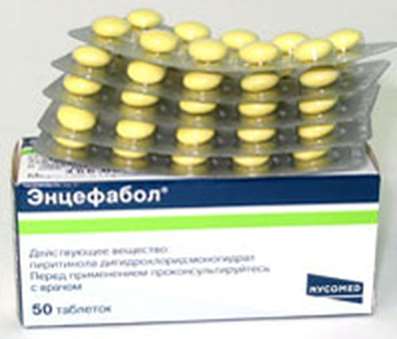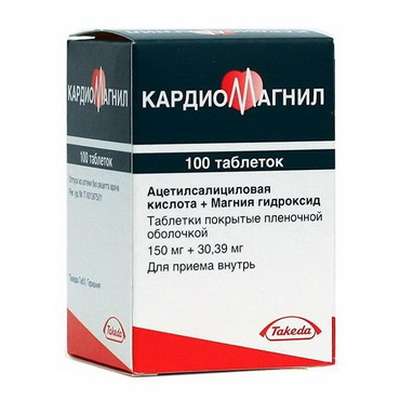Instruction for use: Ibuclin Junior
I want this, give me price
Active substance Ibuprofen + Paracetamol
ATX code M01AE51 Ibuprofen in combination with other drugs
Pharmacological group
Analgesic non-narcotic drugs (analgesic non-narcotic drug + NSAIDs) [NSAIDs - Proprionic acid derivatives in combinations]
Analgesic non-narcotic drugs (analgesic non-narcotic drug + NSAIDs) [Anilides in combinations]
Nosological classification (ICD-10)
K08.8.0 * Painful toothache
Dentinal pain, Dentinal pains, Pain pulpitis, Anesthesia in dentistry, Pain syndromes in dental practice, Pain after removal of tartar, Pain when extracting a tooth, Toothache, Pain after dental interventions
R07.0 Sore throat
A sharp pain in the throat, Sore throat
R50.0 Fever with chills
High fever, Heat, Chills, elevated temperature, hyperthermia, Prolonged fever, Feverish syndrome, Fervescence, Increased body temperature in infectious and inflammatory diseases, fever Symptoms, febrile syndrome, Febrile state, Fever, Fever in infectious and inflammatory diseases, Fever with SARS, Fever with cold, Fever for colds, febrility, Feverish condition with flu, Feverish state in infectious and inflammatory diseases , Feverish state of infectious diseases and in the postoperative period, Feverish condition for colds, Febrile of different genesis, Feverish syndrome on the background of infectious diseases, Feverish syndrome in infectious and inflammatory diseases, Feverish syndrome with colds, Feverish syndrome of different genesis, Increased temperature for colds, Increased temperature at catarrhal and infectious and inflammatory diseases, Increased body temperature in cold, etc., Increased body temperature in cold and other infectious and inflammatory diseases, Increased body temperature in cold and other infectious and inflammatory diseases, Fever during pregnancy, Fever with thrombocytopenia, Febrile reaction in blood transfusion
R51 Headache
Pain in the head, Cephalgia, Pain with sinusitis, Pain in the back of the head, Painful headache, Headache of vasomotor genesis, Headache of vasomotor origin, Headache with vasomotor disorders, Headache, Neurological headache, Serial headache
R52.0 Acute pain
Acute pain syndrome, Acute pain syndrome with osteoarthritis, Acute pain syndrome of traumatic origin, Severe pain of a neurogenic nature, Severe pain, Pain syndrome at delivery
R52.9 Unspecified Pain
Pain after cholecystectomy, Pain shooting, Non-malignant pain, Obstetric and gynecological pain, Pain syndrome, Pain in the postoperative period, Pain in the postoperative period after orthopedic surgery, Pain of inflammatory genesis, Pain than cancer genesis, Pain syndrome after diagnostic procedures, Pain after surgery Diagnostic, Pain after surgery, Pain after orthopedic surgery, Pain after injuries, Pain after the removal of hemorrhoids, Pain at the non-rheumatic inflammation of nature, Pain in inflammatory lesions of the peripheral nervous system, Pain in diabetic neuropathy, Pain in acute inflammatory diseases of the musculoskeletal system, Pain when the tendon pathology, Pain smooth muscle spasm, Pain spasm of smooth muscles (renal and biliary colic, intestinal spasms, dysmenorrhea), Pain spasm of smooth muscles of internal organs, Pain spasm of smooth muscles of internal organs (kidney and biliary colic, intestinal spasms, dysmenorrhea), Pain in trauma syndrome, Pain with injuries and after surgical interventions, Pain in chronic inflammatory diseases of the musculoskeletal system, Pain with duodenal ulcer, Pain syndrome in gastric ulcer, Pain syndrome in gastric ulcer and duodenal ulcer, pain, Pain during menstruation, pain syndromes, painful condition, Painful foot fatigue, Sore gums when wearing dentures, Soreness of the cranial nerves exit points, Painful menstrual irregularities, Painful dressings, Painful muscle spasm, Painful teeth growth, Melosalgia, Pain in the area of the surgical wound, Pain in the postoperative period, Pain in the body, Pain after diagnostic procedures, Pain after orthopedic surgery, Pain after surgery, The pains of the flu, Pain in diabetic polyneuropathy, Pain for burns, Pain during sexual intercourse, Pain during diagnostic procedures, Pain during therapeutic procedures, for colds Pain, Pain in sinusitis, Pain in trauma, Pain traumatic, The pain in the postoperative period, Pain after diagnostic procedures, The pain after sclerotherapy, Pain after surgery, postoperative Pain, Pain postoperative and posttraumatic, posttraumatic pain, Pain when swallowing, Pain in infectious and inflammatory diseases of the upper respiratory tract, The pain of burns, The pain in traumatic muscle injury, Pain in trauma, The pain of tooth extraction, The pain of traumatic origin, Pain caused by spasm of smooth muscles, Expressed pain syndrome, Expressed pain syndrome, traumatic origin, Postoperative pain, Post-traumatic pain, Post-traumatic pain syndrome, Torpid pain, Traumatic pain, Traumatic pain, Mild pain, Moderately severe pain, Moderate pain, Polyarthralgia with polymyositis
T03.9 Multiple dislocations, sprains and injuries of capsular-ligamentous apparatus of joints, unspecified
Dislocation, Dislocations, Distortion
T14.2 Fracture in unspecified area of body
Internal fixation of bone fracture, Acute period after fractures of bones, Edema after interventions for fractures, Fracture, Fractures of bones, Reposition of bone fragments in fractures, Traumatic bone injuries, Traumatic bone injury,Injuries of the osteoarticular system, Injuries to bone tissue
T14.3 Dislocation, sprain and damage to the capsular-ligamentous apparatus of the joint of the unspecified area of the body
Painful stretching of muscles, Pain and inflammation in tension, Dislocation of dislocation, Degenerative changes in the ligamentous apparatus, Edema due to sprains and bruises, Edema after interventions for sprains, Damage and rupture of ligaments, The musculoskeletal system is damaged, Damage to ligaments, Damage to the joints, Ligament ruptures, Tendon tendons,Ruptures of the tendons of muscles,Stretching, Crick, Stretching of the muscle, Sprain, Tension of the tendons, Extensions,Stretch muscles, Sprains, Tension of the tendons, Injury of the musculoskeletal system, Injuries to the joints, Injuries of capsule-articular tissues, Injuries of the osteoarticular system, Injuries to ligamentsInjuries to the joints, Joint wounds, Stretching of the ligamentous apparatus, Habitual stretching and tearing
Composition
Tablets dispersible for children 1 tab.
active substances:
ibuprofen 100 mg
paracetamol 125 mg
auxiliary substances: MCC; corn starch; glycerol; sodium starch glycolate; Silicon colloid anhydrous; lactose; talc; magnesium stearate; ponso 4R; flavoring orange; pineapple flavor; oil mint; aspartame
Description of dosage form
Pink with impregnated round flat tablets with bevelled edges, risk on one side, with the smell and taste of mint.
pharmachologic effect
Pharmacological action - anti-inflammatory, antipyretic, analgesic, inhibitory COX.
Pharmacodynamics
Ibuclin is a combined preparation. Has anti-inflammatory, analgesic and antipyretic effects due to non-selective inhibition of COX-1 and -2 and suppression of PG synthesis.
The efficacy of the combination of ibuprofen and paracetamol is higher than that of individual components.
Indications
It is used in children from 3 to 12 years:
febrile syndrome;
pain syndrome of different etiology: toothache, sprains, dislocations, fractures;
as an auxiliary drug: tonsillitis, acute infectious and inflammatory diseases of the upper respiratory tract (pharyngitis, tracheitis, laryngitis).
Contraindications
hypersensitivity to the components of the drug, acetylsalicylic acid and other NSAIDs;
marked violations of the liver or kidneys;
peptic ulcer of the stomach and duodenum (in the phase of exacerbation);
hemophilia and other disorders of blood clotting (including hypocoagulation), hemorrhagic diathesis;
aspirin asthma;
bleeding of any etiology;
diseases of the optic nerve;
deficiency of glucose-6-phosphate dehydrogenase;
children's age (up to 3 years).
With caution: arterial hypertension; chronic heart failure; hepatic and / or renal insufficiency; nephrotic syndrome; hyperbilirubinemia; peptic ulcer of the stomach and duodenum (in the anamnesis); gastritis; enteritis; colitis; blood diseases of unclear etiology (leukopenia and anemia); bronchial asthma.
Side effects
On the part of the gastrointestinal tract: NSAIDs-gastropathy (abdominal pain, nausea, vomiting, heartburn, decreased appetite, diarrhea, flatulence, constipation, less often - ulceration of the gastrointestinal mucosa, which in some cases is complicated by perforation and bleeding); irritation or dryness of the oral mucosa, pain in the mouth, ulceration of the gingival mucosa, aphthous stomatitis, pancreatitis.
From the hepatobiliary system: hepatitis.
On the part of the respiratory system: dyspnea, bronchospasm.
From the sense organs: hearing loss - hearing loss, ringing or noise in the ears.
From the central and peripheral nervous system: headache, dizziness, insomnia, anxiety, nervousness and irritability, psychomotor agitation, drowsiness, depression, confusion, hallucinations; less often - aseptic meningitis (more often in patients with autoimmune diseases).
From the CCC: heart failure, tachycardia, increased blood pressure.
From the urinary system: acute renal failure, nephrotic syndrome (edema), polyuria, cystitis.
Allergic reactions: skin rash (usually erythematous or urticaria), skin itch, Quincke's edema, anaphylactoid reactions, anaphylactic shock, dyspnoea, fever, erythema multiforme exudative (including Stevens-Johnson syndrome), toxic epidermal necrolysis (Lyell's syndrome) , eosinophilia, allergic rhinitis.
From the hemopoiesis: anemia (including hemolytic, aplastic), thrombocytopenia and thrombocytopenic purpura, agranulocytosis, and leukopenia.
On the part of the organs of vision: toxic damage to the optic nerve, vague vision or double vision, scotoma, dryness and irritation of the eyes, edema of the conjunctiva and eyelids (allergic genesis).
Laboratory indicators: possibly - lengthening of bleeding time, decrease in serum glucose concentration, decrease in Cl creatinine, hematocrit or Hb, increase in serum creatinine concentration, activity of hepatic transaminases.
The risk of ulceration of the gastrointestinal mucosa, bleeding (gastrointestinal, gingival, uterine, hemorrhoidal), visual impairment (color vision, scotoma, optic nerve damage) increases with prolonged use of the drug in large doses.
Interaction
The efficacy of furosemide and thiazide diuretics can be reduced because of sodium retention associated with inhibition of GHG synthesis in the kidneys.
Ibuprofen enhances the effect of direct (heparin) and indirect (coumarin and indanedione derivatives) anticoagulants, thrombolytic drugs (alteplase, anestreplase, streptokinase, urokinase), antiaggregants, colchicine - increases the risk of hemorrhagic complications.
Ibuprofen may reduce the effectiveness of antihypertensive drugs.
Ibuprofen increases the concentration in the blood plasma of digoxin, phenytoin and lithium.
Ibuprofen (like other NSAIDs) should be used with caution in combination with acetylsalicylic acid or other NSAIDs and GCS (this increases the risk of developing adverse effects of the drug on the gastrointestinal tract).
Ibuprofen may increase the concentration of methotrexate in the plasma.
Combined treatment with zidovudine and ibuprofen may increase the risk of hemarthrosis and hematoma in HIV-infected patients with hemophilia.
Ibuprofen enhances the hypoglycemic effect of oral hypoglycemic agents and insulin; it may be necessary to adjust the dose.
Long-term combined use with paracetamol, as well as cyclosporine, with gold preparations increases the risk of developing nephrotoxic effects.
Cefamandol, cefaperazone, cefotetan, valproic acid, plikamycin increase the frequency of hypoprothrombinemia.
The combination of paracetamol with ethanol, GCS, corticotropin increases the risk of erosive and ulcerative lesions of the digestive tract.
Dosing and Administration
Inside, dissolving the tablet in 5 ml of water (1 ts.lozhka).
The daily dose of the drug depends on the age and body weight of the child: 3-6 years (13-20 kg) - 3 tablets / day; 6-12 years (20-40 kg) - up to 6 tablets / day.
In case of violations of the kidney or liver function, the interval between doses should be at least 8 hours.
Duration of treatment should not exceed 5 days with the appointment as an anesthetic and more than 3 days - as an antipyretic.
Overdose
Symptoms: abdominal pain, nausea, vomiting, retardation, drowsiness, depression, headache, tinnitus, metabolic acidosis, coma, acute renal failure, lowering blood pressure, bradycardia, tachycardia, atrial fibrillation, respiratory arrest.
Treatment: gastric lavage (only for an hour after taking), reception of activated charcoal, alkaline drink, forced diuresis, symptomatic therapy (correction of acid-base state, blood pressure).
special instructions
If there are signs of bleeding from the digestive tract, the drug should be canceled (see "Contraindications").
May mask objective and subjective signs of infection, so patients with infection need caution.
Side effects can be reduced by applying the lowest effective dose.
With prolonged use of paracetamol, the risk of developing analgesic nephropathy is possible.
Patients who report visual impairment (ibuprofen) should stop treatment and undergo an ophthalmological examination.
During treatment, it is necessary to monitor the picture of peripheral blood and the functional state of the liver and kidneys.
Form of issue
Tablets are dispersible for children, 100 mg + 125 mg. For 10 tab. in a blister of PVC / aluminum. 1, 2 or 20 bl. in a pack of cardboard.
Conditions of leave from pharmacies
On prescription.
storage Conditions
In the dark place at a temperature of no higher than 25 ° C.
Keep out of the reach of children.
Shelf life
5 years.
Do not use after the expiry date printed on the package.

 Cart
Cart





